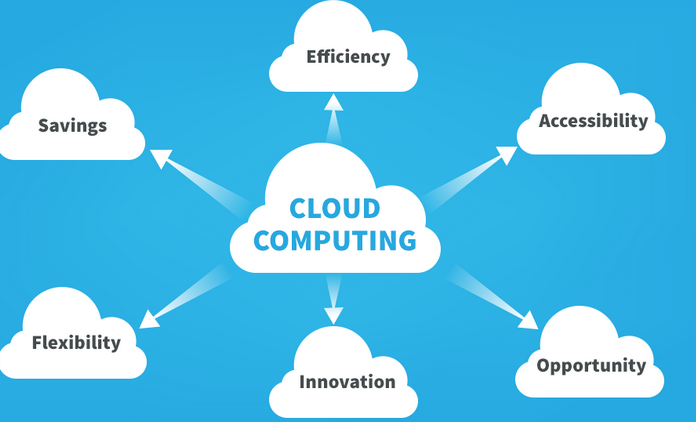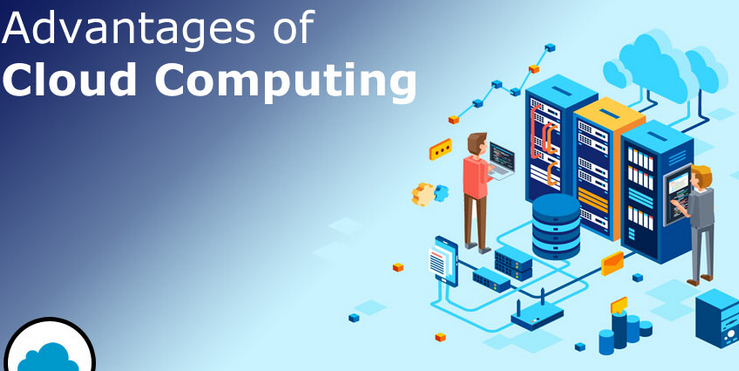Cloud computing refers to the delivery of computing services—such as storage, processing power, and software—over the internet, rather than relying on physical hardware or infrastructure. In this article, we’ll delve into the numerous benefits of cloud computing and how it can revolutionize the way we work and interact with technology.

Cost Efficiency
One of the primary advantages of cloud computing is its cost-effectiveness. With cloud services, users can avoid the significant upfront investment required for traditional IT infrastructure, such as servers and data centres. Instead, they pay for only the resources they use on a pay-as-you-go basis, reducing overall IT expenses and improving budget predictability.
Scalability and Flexibility
Cloud computing offers unparalleled scalability, allowing businesses to easily scale their resources up or down based on demand. Whether it’s expanding storage capacity to accommodate growing data volumes or increasing processing power to handle spikes in traffic, cloud services provide the flexibility to adapt to changing needs quickly and efficiently.
Improved Collaboration
Cloud computing enables seamless collaboration among teams, regardless of their geographical location. With cloud-based productivity tools and file-sharing platforms, employees can collaborate on documents in real time, share information effortlessly, and work together more efficiently. This fosters greater productivity, innovation, and teamwork within organizations.
Enhanced Accessibility
Another key benefit of cloud computing is its accessibility. Cloud-based applications and data can be accessed from any internet-connected device, allowing users to work remotely or on the go. This accessibility empowers employees to stay productive and connected, regardless of their location, leading to greater work-life balance and flexibility.
Automatic Updates and Maintenance
Cloud service providers handle the maintenance, updates, and security patches for their platforms, relieving users of the burden of managing IT infrastructure. This ensures that organizations always have access to the latest features and enhancements without the need for manual intervention, saving time and resources.
Improved Security
Contrary to common misconceptions, cloud computing often offers robust security measures to protect data and applications. Cloud providers invest heavily in cybersecurity measures, such as encryption, access controls, and threat detection systems, to safeguard sensitive information and mitigate cyber threats. Additionally, cloud-based backup and disaster recovery solutions help ensure business continuity in the event of a security breach or data loss.
Environmental Sustainability
Cloud computing can also contribute to environmental sustainability by promoting resource efficiency and reducing carbon emissions. By consolidating resources on shared infrastructure and optimizing server utilization, cloud providers can achieve higher energy efficiency and lower environmental impact compared to traditional on-premises data centres.
Global Reach and Reliability
Cloud computing services are typically hosted in multiple data centres located across different geographic regions. This distributed infrastructure enhances reliability and resilience by reducing the risk of downtime or service disruptions due to localized outages or hardware failures. Additionally, cloud providers often offer service level agreements (SLAs) guaranteeing uptime and performance, further enhancing reliability for users.
Streamlined IT Management
Cloud computing simplifies IT management by centralizing resources and reducing the need for on-site hardware maintenance and software updates. This allows IT teams to focus on strategic initiatives and innovation rather than routine maintenance tasks.
Faster Time to Market
With cloud computing, organizations can quickly deploy new applications, services, and infrastructure resources, reducing the time to market for new products and innovations. This agility enables businesses to stay competitive in fast-paced markets and respond promptly to changing customer demands.
Big Data Analytics
Cloud computing provides scalable and cost-effective infrastructure for processing and analyzing large volumes of data. Organizations can leverage cloud-based analytics platforms to derive valuable insights from their data, enabling data-driven decision-making and business intelligence.
Disaster Recovery and Business Continuity
Cloud-based backup and disaster recovery solutions offer a reliable and cost-effective way to protect data and ensure business continuity in the event of a disaster or system failure. By replicating data across multiple geographically dispersed data centres, cloud providers can minimize downtime and data loss, helping organizations recover quickly from disruptions.
Increased Competitive Advantage
Cloud computing levels the playing field for businesses of all sizes, enabling smaller organizations to access the same powerful technology resources as larger enterprises. This democratization of technology empowers businesses to innovate, disrupt industries, and gain a competitive edge in the marketplace.
Conclusion
In conclusion, the benefits of cloud computing are vast and diverse, ranging from cost savings and scalability to improved collaboration and security. By embracing cloud technology, businesses and individuals can unlock new opportunities for innovation, agility, and growth in an increasingly digital world.

